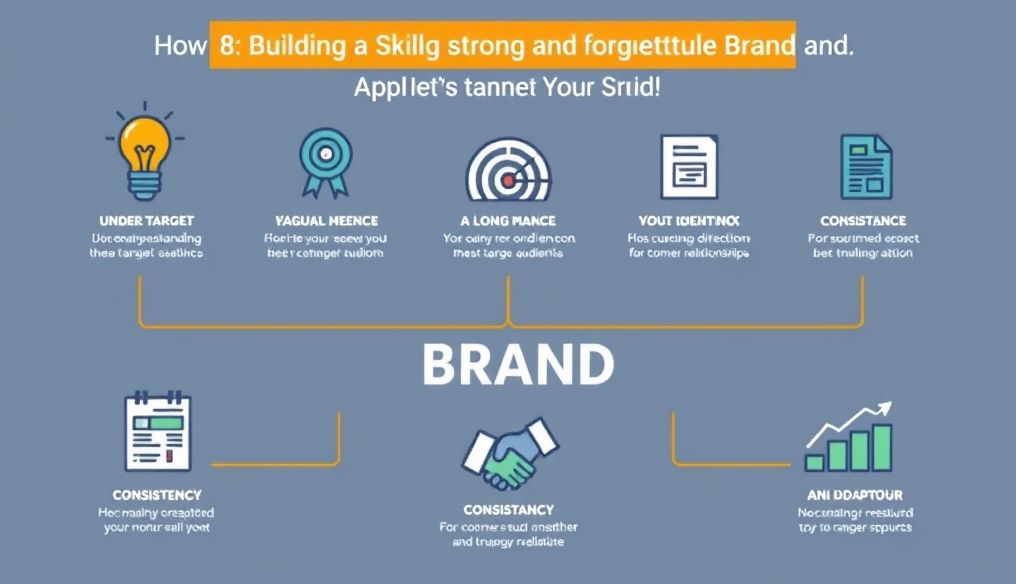How to Effectively Market Your Small Business on Social Media in 2024?
In today's digital world, social media has become an indispensable tool for any small business looking to grow and thrive. These platforms are no longer just places for social interaction; they have transformed into vibrant marketing arenas that allow you to reach a broad audience at an affordable cost. However, with so many platforms and strategies, how can you ensure that you are using social media effectively to achieve your business goals? This article will provide you with a comprehensive guide on how to successfully market your small business on social media in 2024.
Chapter 1: Understanding the Basics of Social Media Marketing
What is Social Media Marketing?
Social media marketing is the use of social media platforms such as Facebook, Instagram, Twitter, LinkedIn, and TikTok to promote your products or services, connect with customers, and build your brand. It involves creating and sharing engaging content, interacting with users, and analyzing results to improve your strategies.
Why is Social Media Marketing Important for Small Businesses?
- Increase Brand Awareness: Social media helps you introduce your brand to a wider audience.
- Drive Traffic to Your Website: You can use social media to direct potential customers to your website.
- Generate Leads: Through targeted advertising campaigns, you can collect contact information from potential customers.
- Improve Customer Service: You can use social media to respond to customer inquiries and resolve their issues quickly.
- Build Relationships with Customers: By regularly interacting with customers, you can build strong and lasting relationships.
- Cost-Effective: Compared to traditional advertising, social media marketing is more cost-effective.
Chapter 2: Identifying Your Target Audience
Who are Your Ideal Customers?
Before starting any marketing campaign, it is essential to know who your ideal customers are. What are their ages? Where do they live? What are their interests? What are their problems? The more you know about your target audience, the more engaging and targeted content you can create.
How to Identify Your Target Audience?
- Analyze Existing Customer Data: Look at your current customers and try to identify common patterns among them.
- Conduct Surveys: Ask your current customers to share their opinions about your products or services.
- Use Audience Analysis Tools: Use audience analysis tools available on social media platforms to get information about users who interact with your brand.
- Analyze Competitors: Look at who your competitors are targeting and try to identify gaps that you can exploit.
Chapter 3: Choosing the Right Platforms
Which Platforms Does Your Target Audience Use?
Not all social media platforms are created equal. Some platforms are more popular among certain age groups or among people with specific interests. Choose the platforms that your target audience uses regularly.
Overview of Key Social Media Platforms:
- Facebook: A broad platform suitable for all types of businesses.
- Instagram: A visual platform ideal for businesses that focus on images and videos.
- Twitter: A fast-paced platform ideal for businesses that want to share news and updates in real-time.
- LinkedIn: A professional platform ideal for businesses that target companies or professionals.
- TikTok: A short-form video platform ideal for businesses that target young people.
- Pinterest: A platform for discovering ideas and inspiration, ideal for businesses that focus on visual products and crafts.
Chapter 4: Creating Engaging Content
What Content Interests Your Target Audience?
Content is the heart of social media marketing. Your content should be engaging, informative, and shareable. Think about what interests your target audience and what problems you can help them solve.
Types of Content You Can Create:
- Images: High-quality images that showcase your products or services.
- Videos: Short videos that showcase your products or services, offer helpful tips, or tell inspiring stories.
- Articles: Blog articles that provide valuable information about your industry.
- Infographics: Infographics that present data or statistics in an engaging and easy-to-understand way.
- Live Streams: Live streams to interact with your audience in real-time.
- Stories: Sharing quick and fleeting moments from your day or behind the scenes.
- Polls and Contests: Encouraging participation and interaction with your audience.
Tips for Creating Engaging Content:
- Use simple and easy-to-understand language.
- Focus on the benefits your audience will receive.
- Use images and videos to make your content more engaging.
- Ask questions to encourage interaction.
- Use Call to Action to guide your audience to the next step.
Chapter 5: Engaging with Your Audience
Why is Engagement Important?
Social media platforms are for social interaction, so it's important to engage with your audience. Respond to comments and messages, participate in conversations, and show that you care about your customers' opinions.
How to Engage with Your Audience?
- Respond to comments and messages in a timely manner.
- Ask questions to encourage interaction.
- Participate in conversations related to your industry.
- Organize contests and giveaways to encourage participation.
- Ask your customers to share their opinions about your products or services.
Chapter 6: Using Paid Advertising
When Should You Use Paid Advertising?
Paid advertising can be an effective way to expand your reach and increase brand awareness. Use paid advertising when you want to reach a wider audience than your current followers, or when you want to promote a new product or service.
Types of Paid Advertising Available:
- Facebook and Instagram Ads: Allow you to target a specific audience based on age, location, interests, and behaviors.
- Twitter Ads: Allow you to promote your tweets to specific accounts or to users with certain interests.
- LinkedIn Ads: Allow you to target professionals based on job title, company, and skills.
- TikTok Ads: Allow you to reach a young audience through short videos.
Tips for Using Paid Advertising Effectively:
- Define your goals clearly.
- Target the right audience.
- Create engaging ads.
- Monitor your results and adjust your advertising campaigns as needed.
Chapter 7: Analyzing Results and Adjusting Strategy
Why is Analyzing Results Important?
Analyzing results is the final and most important step in social media marketing. By analyzing the results, you can see what is working and what is not, and adjust your strategy to achieve the best results.
What Metrics Should You Track?
- Reach: The number of people who have seen your content.
- Engagement: The number of likes, comments, and shares your content has received.
- Clicks: The number of people who have clicked on the links in your content.
- Conversions: The number of people who have taken a specific action after seeing your content, such as buying a product or subscribing to a mailing list.
- Bounce Rate: The percentage of visitors who leave your site after viewing only one page.
- Time on Site: The average amount of time visitors spend browsing your site.
How to Analyze Results and Adjust Your Strategy?
- Use data analysis tools available on social media platforms.
- Look for patterns and trends in your data.
- Adjust your strategy based on the results you get.
- Test new strategies constantly.
Chapter 8: Useful Tools and Techniques for Social Media Marketing
Social Media Management Tools
These tools help you schedule posts, monitor mentions of your brand, and analyze results. Some popular tools include Hootsuite, Buffer, and Sprout Social.
Content Design Tools
These tools help you create visually appealing images and videos. Some popular tools include Canva, Adobe Spark, and Animoto.
Data Analysis Tools
These tools help you track and analyze the performance of your marketing campaigns. Some popular tools include Google Analytics, Facebook Analytics, and Twitter Analytics.
Chapter 9: Common Mistakes to Avoid
Lack of a Clear Strategy
Without a clear strategy, your marketing efforts will be scattered and ineffective. Make sure you have a clear plan that defines your goals, target audience, the platforms you will use, and the types of content you will create.
Failure to Engage with the Audience
Social media platforms are for social interaction, so it's important to engage with your audience. Respond to comments and messages, participate in conversations, and show that you care about your customers' opinions.
Posting Unengaging Content
Content is the heart of social media marketing. Make sure your content is engaging, informative, and shareable. Think about what interests your target audience and what problems you can help them solve.
Failure to Analyze Results
Analyzing results is the final and most important step in social media marketing. By analyzing the results, you can see what is working and what is not, and adjust your strategy to achieve the best results.
Chapter 10: The Future of Social Media Marketing
Emerging Trends in Social Media Marketing
Social media marketing is constantly evolving. Some emerging trends include:
- Artificial Intelligence (AI): AI is used to automate tasks, improve ad targeting, and create personalized content.
- Augmented Reality (AR): AR is used to create interactive experiences for customers.
- Influencer Marketing: Collaborating with influencers to reach a wider audience.
- Short-form Video Marketing: Using short videos on platforms like TikTok and Instagram Reels to reach a young audience.
How Can You Prepare for the Future?
- Stay up-to-date on the latest trends in social media marketing.
- Experiment with new strategies constantly.
- Invest in new tools and technologies.
- Be prepared to adapt to changes in social media platform algorithms.
In short, social media marketing is a powerful tool that small businesses can use to achieve growth and prosperity. By understanding the basics of social media marketing, identifying your target audience, choosing the right platforms, creating engaging content, interacting with your audience, using paid advertising, and analyzing results, you can achieve your business goals successfully.




